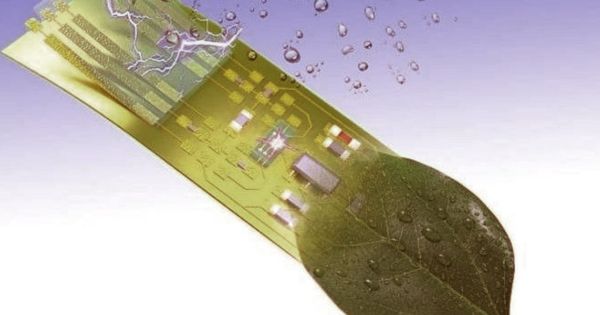Graphite and diamond are two of the most well-known forms of carbon, but there are many other less common nanoscale allotropes of the element. Among these are graphene and fullerenes, which are sp2 hybridized forms of carbon with either zero (flat-shaped) or positive (sphere-shaped) curvatures.
Theoretically hypothesized sp2 hybridized carbon with negative curvature, known as “schwarzite,” has been the goal of certain researchers in the field of carbon materials.
It has been discovered that carbon can be vapor deposition templated into certain of the periodic pores of some zeolites, although the templating is insufficient since some pores are simply too small. This has thwarted making carbon schwartzites by templating routes.
Recently, a team of researchers from the Center for Multidimensional Carbon Materials within the Institute for Basic Science (IBS), South Korea led by Director Rodney RUOFF and his colleagues at the University of Science and Technology of China led by Professor Yanwu ZHU, reported a discovery of a new form of carbon.
Zhu who led the USCT team said, “Professor Ruoff explained his interest in the triply periodic minimal surfaces that were described by the mathematician Schwartz, and how trivalently bonded carbon can in principle yield identical structures at the mathematical constructs. These are now referred to as “carbon schwarzite” structures, and that also can be called “negative curvature carbon.” I told him years ago that this was an exciting research topic and that it might be possible to find ways to collaborate on his suggestion.”
This new form of carbon was produced using C60 fullerene (buckminsterfullerene, also called “buckyball molecules”) powder, as base material. The C60 was mixed with α-Li3N (“alpha lithium nitride”) and then heated to moderate temperatures while holding at one atmosphere of pressure.
It was learned that the α-Li3 catalyzed the breaking of some of the carbon-carbon bonds in C60, and new C-C bonds were then formed with neighboring C60 molecules through electron transfer to the C60 molecules.
Ruoff said, “In this particular effort, Prof. Zhu and team at USTC used a potent electron transfer agent (α-Li3N) to drive the formation of a new type of carbon by starting with crystalline fullerene.”
Professor Zhu and team named their new carbon, ‘long-range ordered porous carbon’ (LOPC).
LOPC consists of ‘broken C60 cages’ that are connected with long-range periodicity. In other words, although the broken C60 cages have partially “opened” and formed bonds with one another, they are all still centered on the lattice sites of the face-centered cubic lattice. There is still a long-range periodic order of a specific type in this case, but not every shattered C60 cage is the same as its neighbors.
Professor Ruoff explained his interest in the triply periodic minimal surfaces that were described by the mathematician Schwartz, and how trivalently bonded carbon can in principle yield identical structures at the mathematical constructs. These are now referred to as “carbon schwarzite” structures, and that also can be called “negative curvature carbon.” I told him years ago that this was an exciting research topic and that it might be possible to find ways to collaborate on his suggestion.
Professor Yanwu ZHU
It was discovered that the LOPC only formed at specific temperatures and carbon/Li3N ratios. Heating up to 550 oC with a 5:1 ratio between carbon and Li3N causes partial destruction (breaking of some C-C bonds) of the buckyballs, which resulted in discovery of the “broken C60 cage” structure that is found in the LOPC.
A milder temperature of 480 oC or lower level of Li3N does not damage the buckyballs, which instead join together to form a “C60 polymer crystal.” This crystal decomposes back to individual buckyballs upon reheating. The buckyballs, however, completely disintegrated when too much Li3N or a harsher temperature exceeding 600 oC were applied.
Many techniques were used to define this new carbon, and (indeed) it was difficult to do so due to the diversity of slightly different “broken C60 cages” that yet manage to keep their positions in a typical face-centered cubic crystal lattice.
The structure of this novel type of carbon was determined using X-ray diffraction, Raman spectroscopy, magic-angle spinning solid-state nuclear magnetic resonance spectroscopy, aberration-corrected transmission electron microscopy, and neutron scattering.
In conjunction with the aforementioned experimental techniques, numerical simulations based on neural network modeling demonstrate that LOPC is a metastable structure created during the transition from “fullerene-type” to “graphene-type” carbons.
The “carbon K-edge near-edge X-ray absorption fine structure” data shows a higher degree of delocalization of electrons in LOPC than in C60. At normal temperature, the electrical conductivity is measured to be 1.17 × 10−2 S cm−1, and conduction below 30 Kelvin appears to be a combination of metallic-like transport over short distances punctuated by carrier hopping. Understanding these electrical characteristics is crucial for clarifying what potential uses there may be for such a novel form of carbon.
Ruoff notes, “While this beautiful new type of carbon has many fascinating features, it is not a carbon schwarzite, so that experimental challenge still remains on the horizon! Indeed, this carbon is something different and unique it opens up entirely new possibilities in new directions for carbon materials.”
The preparation of LOPC paves the way for the discovery of other crystalline carbons starting from C60(s) and perhaps from other fullerenes like C70, C76, C84, and so on. Other exciting options would be including another element. This can be done by starting with the “endohedral” fullerenes such as M@ C60, where M can be an element like lanthanum or many others, which is encapsulated inside the all-carbon fullerene cage.
The research team envisions potential uses for the technology in the separation of molecular ions or gases as well as the capture, transformation, and storage of energy. The scalability of the synthesis is a significant component that is also highlighted in their Nature study. According to Zhu, it is easily scaleable to a kilogram scale, and with continuous production techniques, ton-scale production would be achievable.
“Yanwu invited me to join the effort after some initial success in synthesis and promising initial steps in their project, and fortunately, I was able to make some helpful suggestions about the science underway and through to completion of this study now published in Nature. Credit for the synthesis and the hands-on experimental studies is entirely due to Yanwu and his team. It was my pleasure to provide some advice on certain topics, including some analyses to undertake and what might be learned therefrom,” Ruoff notes.
“Collaboration with colleagues is one of the pleasures of doing science. The topic here was a new form of carbon, perfectly aligned with the interests of our CMCM center that I direct and that is located at UNIST. So, I jumped into the collaboration with excitement, and a great eagerness to try to contribute in useful ways!”
Zhu said, “Professor Ruoff is a legendary scientist in carbon materials and also, simply in general. I was a postdoctoral fellow in his research group for 3 years and 3 months, and during those years I learned a great deal about how to do basic science from him. Indeed, my final years as a postdoc were spent in very close dialogue with him on a daily basis about work that was eventually published in Science, which happened to also be about trivalently bonded carbon based on graphene-like sheets. I and my team were very happy he joined our effort, and he contributed strongly to the science that we have described in our article published in Nature.”
















